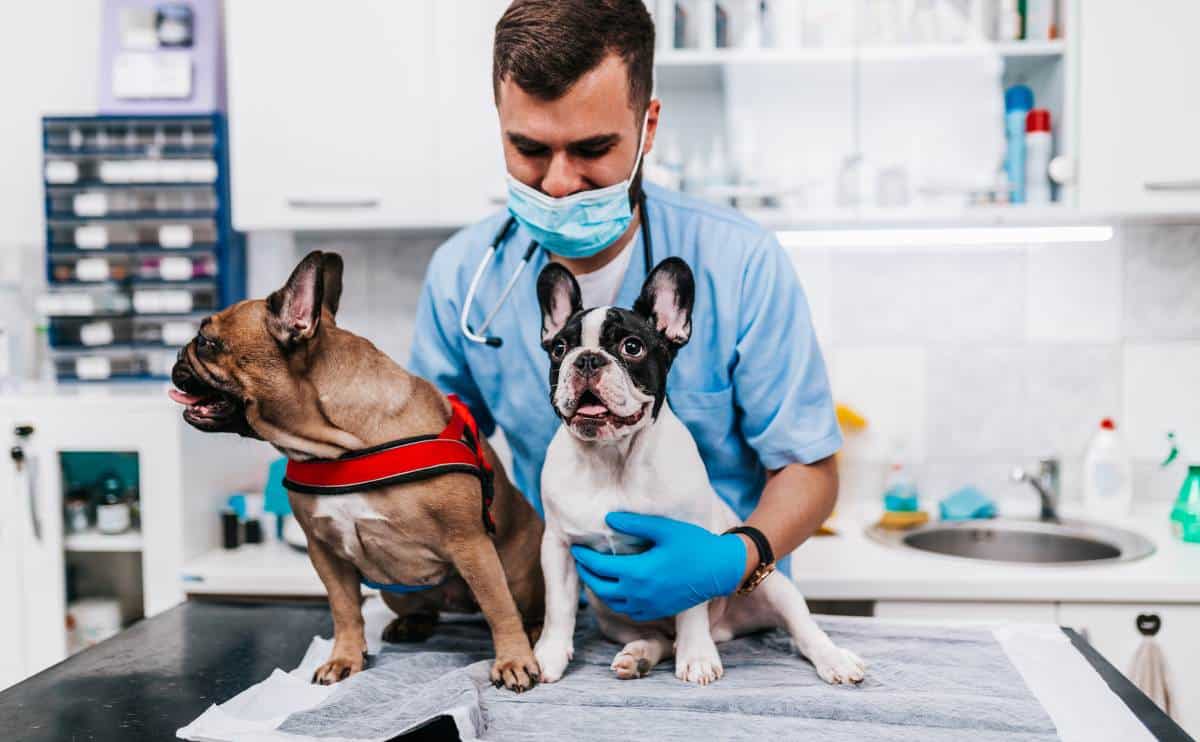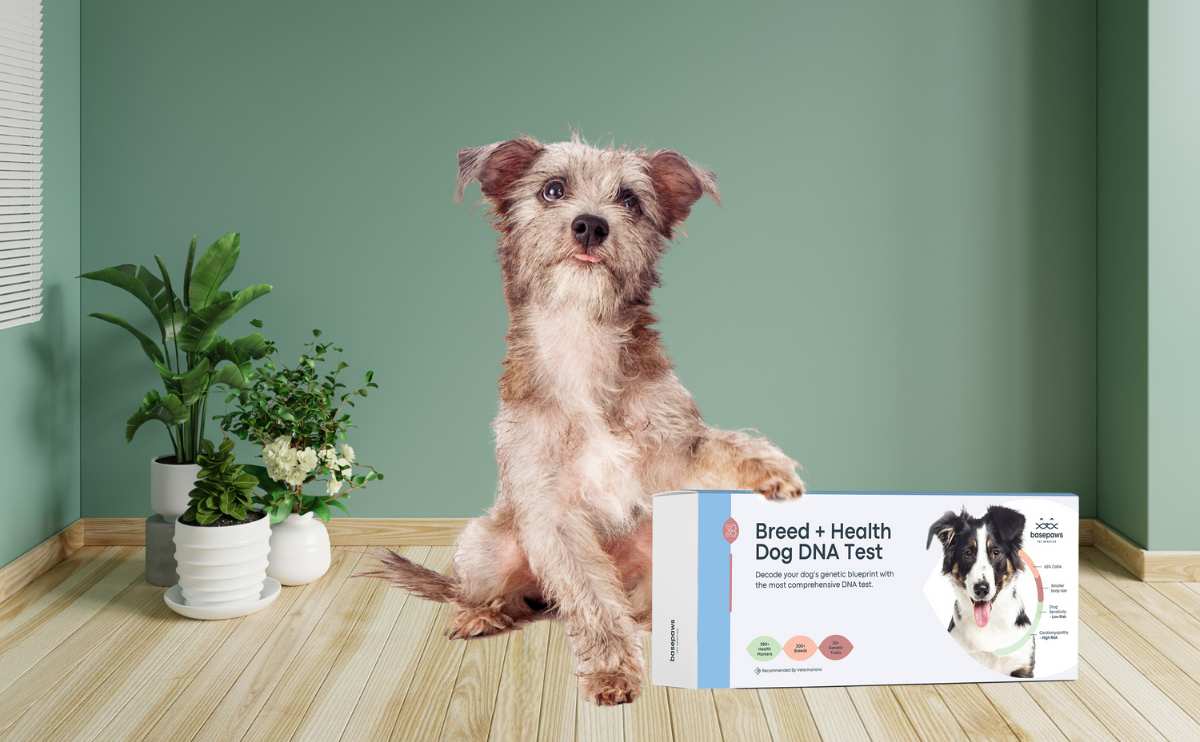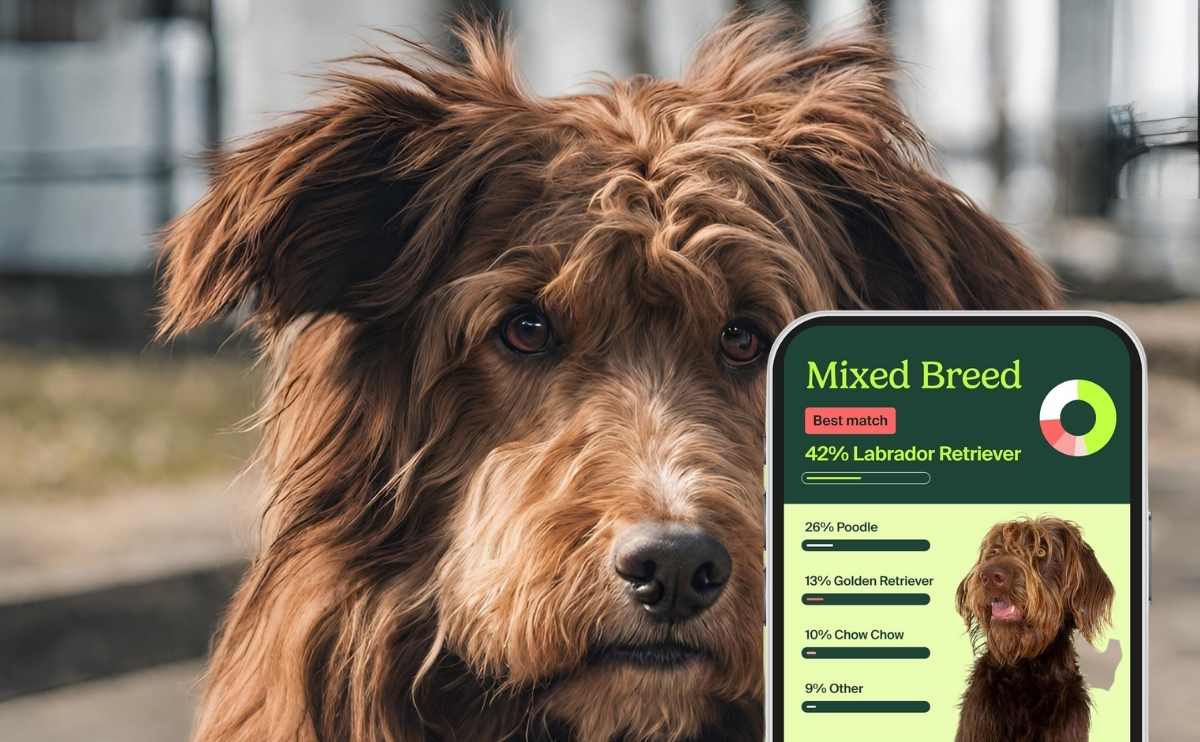When you purchase through links on our site, we may earn a commission. Here’s how it works.
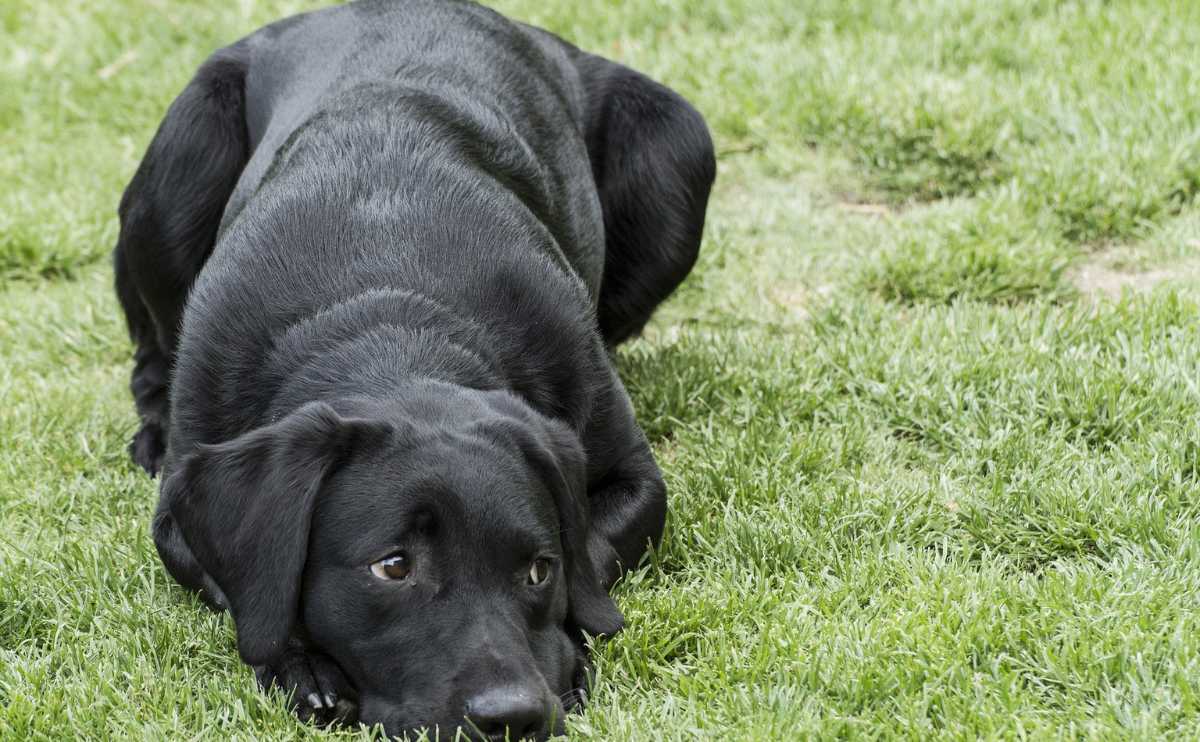
A particularly versatile and intelligent dog breed, it is no surprise that the Labrador Retriever has been among the American Kennel Club’s most popularly registered dog breeds for the past three decades. Beating out other popular breeds including the German Shepherd, Yorkshire Terrier, Golden Retriever and even the incredibly intelligent Poodle, the Labrador Retriever certainly stands a notch above the rest.
So what makes this Canadian breed so popular? A wide array of physical and mental characteristics make the Labrador retriever a favored choice, and let’s not forget those big friendly brown and hazel eyes!
History
The Labrador Retriever originated on the island of Newfoundland, part of the province of Newfoundland and Labrador, Canada. The Labrador, like other dog breeds, originally began as another dog entirely – in this case the St. John’s Water Dog (also known as the Lesser Newfoundland.)
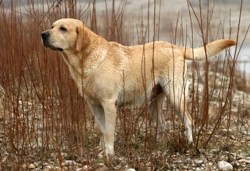
The Labrador Retriever is not the only dog to share this ancestor. The Flat Coated Retriever, the Chesapeake Bay Retriever and the Golden Retriever, all share the St. John’s Water Dog in their lineage.
It was through interbreeding in the late 16th century that the Labrador Retriever got its start. Despite being interbred with other dogs the Labrador Retriever still maintained many of the features of the St. John’s Water Dog. Barring its white tuxedo markings, the St. John’s Water Dog resembles a black Labrador Retriever almost identically.
The Labrador also managed to continue the retrieval skills of the St. John’s Water Dog including pulling fishermen’s nets in from the water.
What Did Its Ancestors Do?
As the Labrador Retriever breed came to its own breed it became a popular fishing boat dog among fishermen in the St. John’s area. Not only was the Labrador Retriever prized for its retrieval ability but its loyalty and good work ethic resulting from its eager to please nature kept the Labrador Retriever as a working breed of dog. While the Labrador Retriever thrived as a water dog in the St. John’s area they also found themselves being brought back to England in the 1800’s which served as a central command for the Newfoundland fishing industry. During this time kennels popped up around England and the Labrador became a popular hunting dog among waterfowl hunters.
How The Labrador Retriever Came To Be

It was upon bringing the Labrador Retriever back to England that the breed found its official ancestry with the breeding program implemented by the Duke of Buccleuch. It is ascertained by Labrador aficionados that the modern day Labrador has its roots with the two dogs given to the Duke to assist in his program: Avon and Ned.
The Labrador Retriever soon became known in England by its current name rather than the “St. John’s Water Dog” by which it was formerly known. The Labrador Retriever was given its own name to distinguish it from other dogs heralding from the same area of Newfoundland, it was named after the Labrador area.
The Labrador Retriever was particularly favored by fishermen and hunters alike for its smooth and short coat. In contrast to the smooth short coat of the Labrador Retriever, the Newfoundland (also stemming from the St. John’s Water Dog) had a thicker and wavier coat which tended to trap ice and weigh the dog down in the water.
Two Lineages
In current society it is often believed that there are two different breeds, however, this is not the case. The Labrador Retriever does have two different lines, a conformation line (“English“, “Blocky Headed,” “show” or “bench” Labs) and a field line (“American” or “working” Labs).

The two varieties of Labrador Retriever are both still of the Labrador Retriever breed, but they each came to be specialized for their intended “jobs”.
The shorter and stockier conformation line of Labrador Retrievers have blockier heads and are generally used as show dogs (it should be noted that this is not always the case and field lines can also be shown per the AKC breed standard.)
The taller and lighter field line of Labrador Retriever is more slender than its counterpart and is generally used for field work (again, it should be noted that this is not always the case and conformation lines can also be used as working dogs.)
Yellow And Chocolate Colored Labs
As the Labrador Retriever breed began to get its start it was black. As breeding programs continued, there were occasionally yellow and chocolate puppies but due to the breed ideal at the time being for black puppies these outcasts were often removed from litters and future breeding programs.
It wasn’t until the twentieth century that yellow and chocolate Labrador Retrievers became accepted as part of the breed. The yellow Labrador Retriever was the first to be popularized in 1899 and the chocolate Labrador Retriever followed in the 1930’s.
The Yellow Lab

The early yellow Labrador Retriever was much darker in color than the yellow Labrador Retrievers seen today; they resembled more of a Golden Retriever standard color. As breeding continued, however, buyers showed a preference for the lighter color of yellow and soon this became the norm for the breed. There are some “fox red” (a very dark yellow) Labrador Retrievers around these days and they have begun to make a comeback as a popular color choice among lovers of the breed.
Unlike the change in coat color with the yellow Labrador Retriever, the chocolate and black Labrador Retrievers have no acceptable variety in their color.
It is also thought by some that “silver” Labradors exist. However, this statement has been refuted by most members of the Labrador Retriever lover’s society and it has been suggested that a “silver” Labrador is merely a cross between a Labrador Retriever and a Weimaraner (which possesses a shimmery silver coat.)
Lastly, there is a genetic pigmentation issue within some yellow Labrador Retriever’s – particularly when yellow and chocolate Labrador Retriever’s are bred – which results in a yellow Labrador Retriever having flesh-colored pigmentation around the eyes and on the nose. This is not a desired trait according to AKC regulations, and it is referred to as a “Dudley” Labrador Retriever.
Breed Characteristics
Everything about the Labrador Retriever that is known and accepted as the breed standard today derives from its origin as a water dog, particularly its water repellent coat as well as its other specialized physiological features.
Water Repellent Coat

The Labrador Retrievers coat should not be curly by breed standards and, although it is permissible to have a wave down the back of the coat, generally the hair lies flat.
The slightly oily coat leads inexperienced owners with the impression that their dog needs bathing but the oiliness is natural and protects the skin.
Webbed Toes
Webbed toes are usually found on dogs that were bred out of retrieving stock. Webbed toes assist dogs who work in the water to efficiently paddle through the water quickly.
Otter-Like Tail
The Labrador Retriever also has a thick otter-like tail which is efficient as a rudder when swimming in the water. This thick and powerful tail is wide at the base and tapers to a tip at the end, even the Labrador Retriever’s tail is covered with its thick and water resistant coat.
Neck
The Labrador Retriever is known for having a “bull neck” – a neck that is wide and muscular. The large thick neck was a useful trait when the dogs were used mostly for hauling fishing nets back to fishermen’s boats.
These days the Labrador Retriever is still expected to have a thick and muscular neck; however, for most dogs it serves little purpose as they no longer work such laborious duties.
Size And Weight

While the colors of their coats may change the standard for the size and weight of the breed does not. According to the American Kennel Club’s regulations, the Labrador Retriever should measure in at the withers at 22 ½ to 24 ½ inches tall if it is a male and 21 ½ to 23 ½ inches tall as a female.
The weight class for male dogs is 65 to 80 lbs and for females is 55 to 70 lbs. The Labrador Retriever is a rather large breed and is also commonly known for having a knot (also called a “knowledge bump”) on the top of its head.
Watch Your Lab’s Weight Carefully
A 2024 study found that an estimated 25% of Labrador Retrievers have a genetic mutation that puts them at a high risk for obesity. Learn more about this research and how you can help your pup if he has an insatiable appetite.
How Smart Is My Lab?
Labs actually ranked as the seventh most intelligent dog breed, so you count on them to learn quickly and stand out in obedience training, especially when treats are involved!
Though the Labrador Retriever is a particularly smart breed of dog the idea that this knot is related to the amount of knowledge that a dog picks up is simply a myth. This large bump on the dogs head is actually the occipital bone which can be more prominent in both breeds and individual dogs.
Labs Are “Pleasers”

There is some argument among fans of the Labrador Retriever breed that certain lines of Labrador Retriever’s or even certain colors have better temperaments than others. This is simply not true. A dog’s temperament depends very much on its genetic makeup, its individual upbringing and its medical soundness.
Overall Labrador Retrievers are known for being well-balanced and friendly dogs. They possess the skill and versatility to be working dogs as well as service dogs and just good companions. Unlike some other breeds the Labrador Retriever is not well known for being territorial, aggressive or nervous and they are “pleasers” by nature which makes them particularly adaptable as dogs who serve their communities.
Working Dog
Labrador Retrievers are generally food and praise driven dogs and combining this fact with their incredible intelligence, they make the perfect candidates as working dogs.

Working dogs can perform a variety of different duties that help the community. Or can simply participate in activities for the thrill of the game!
Common jobs for Labrador Retrievers include Police K9 Unit work, Bomb Sniffing Dogs, Search And Rescue, Tracking, Therapy Dogs, Seeing Eye Dogs and Cancer Sniffing Dogs.
Labrador Retrievers also thrive when challenged with activities to keep their minds busy. Such events may include Dock Diving, Hunting And Retrieval, Agility, Flyball, and even Dancing!
Regardless of what job a Labrador Retriever takes part in, this working breed is always up for a good challenge. A challenged dog is a tired dog and a tired dog is a happy dog.
Watch as this dock dog performs at a competition.
Pet Insurance Testimonial
Labrador Retriever: Macy
Pet Parent: Linda
Injury: ACL and Torn Meniscus Surgeries
Fetch Reimbursement: $5,694.20
We did not have pet insurance with our first dog and we paid thousands out of pocket for 3 ACL surgeries and treatment for Addison’s disease. We learned our lesson and this time got Fetch insurance from the moment we brought Macy home. Two years ago, Macy had ACL surgery and we were reimbursed $2,700. Now, she tore her meniscus and had a $3,200 surgery. Fetch reimbursed us $2,994.20 for that latest surgery. We are so happy we chose to go with Fetch. The process is easy and they really seem to care.
Learn More About Pet Insurance
Is A Lab Retriever The Right Dog For You?
The Labrador Retriever is not the right breed for everyone. If you’re looking for a dog to lounge around all day, this is definitely not the breed for you! But if you are looking for a dog who will provide companionship on your daily walks, a good laugh or two when that huge otter-like tail sweeps everything off the coffee table and a wow of amazement as it retrieves that ball for the fiftieth time, then the Labrador Retriever could be the right dog for you.
This is an eager to please and loyal dog. If you are willing to give the Labrador Retriever the stimulation and exercise it needs to stay healthy and avoid boredom, then you will have the ideal companion. What happens if you can’t keep a Labrador Retriever exercised and mentally stimulated? Well, you may find them creating their own game using your couch cushions and… well, anything else they discover.
Tagged With: Large Dogs, Smartest Breeds, Working Dogs